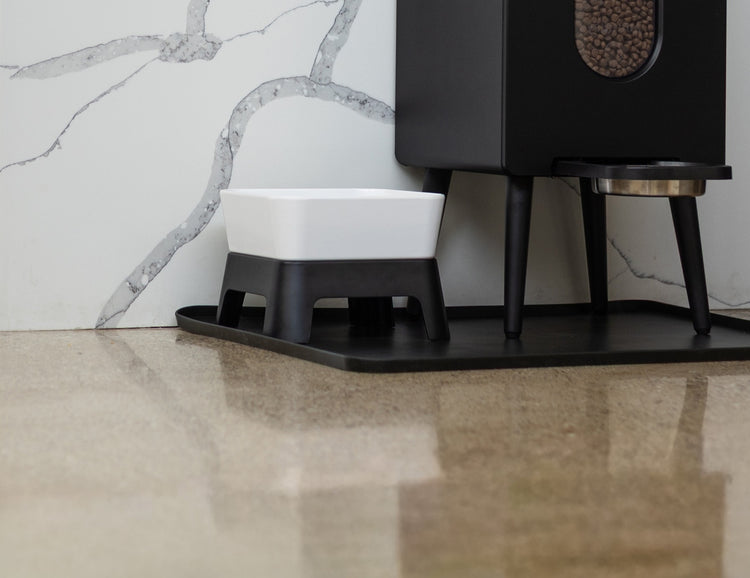How to Train a Dog Not to Bite: A Comprehensive Guide for Pet Owners
- Houndsy
Table of Contents
- Introduction
- Understanding Dog Behavior: Why Dogs Bite
- The Importance of Socialization
- Training Techniques: How to Train a Dog Not to Bite
- When to Seek Professional Help
- FAQs
- Conclusion
Introduction
Did you know that approximately 4.5 million people are bitten by dogs every year in the United States alone? This startling statistic highlights a significant challenge faced by pet owners and underscores the importance of understanding how to train a dog not to bite. Whether you have a new puppy or an adult dog with established habits, addressing biting behavior is crucial for the safety of both your furry friend and those around them.
In this blog post, we will explore the reasons behind biting, the importance of socialization, and effective training techniques. By the end of this article, you will have a comprehensive understanding of how to implement positive reinforcement methods that promote gentle behavior in your dog. We will also discuss the role of management and environment, as well as when to seek professional help if needed.
As fellow dog lovers, we understand the challenges and joys of pet ownership, and we’re here to help you transform your dog's biting tendencies into positive interactions. Let’s embark on this journey together and learn how to ensure our dogs are well-behaved members of the family.
Understanding Dog Behavior: Why Dogs Bite
Before we can train our dogs not to bite, we need to understand the underlying reasons for this behavior. There are several factors that contribute to why dogs may bite, including:
Fear and Anxiety
Many dogs bite because they feel threatened or frightened. This can occur in unfamiliar situations, around strange people, or when they perceive a threat to their territory or owner. Understanding your dog's triggers can help you prevent situations that may lead to biting.
Playfulness and Excitement
Puppies, in particular, may nip and bite during play as a natural part of their development. However, as they grow, it's essential to teach them the difference between playful mouthing and inappropriate biting.
Lack of Socialization
Dogs that have not been adequately socialized may lack the skills to interact appropriately with people and other animals. This can lead to fear-based aggression and biting.
Pain or Discomfort
If a dog is in pain or discomfort, it may bite as a way to communicate that something is wrong. This is why it's crucial to rule out any medical issues with a veterinarian if your dog exhibits sudden biting behavior.
Protective Instincts
Some dogs may bite to protect their resources, such as food, toys, or even their owners. It's essential to teach your dog that there are positive ways to share and interact without resorting to aggression.
By understanding these factors, we can better address the underlying issues that lead to biting and create a training plan tailored to our dog's specific needs.
The Importance of Socialization
Socialization is a critical aspect of raising a well-adjusted dog. It involves exposing your dog to a variety of people, environments, and experiences to help them become comfortable in different situations. Here are some key points about socialization:
Start Early
For puppies, the socialization period typically occurs between 3 and 14 weeks of age. During this time, it's crucial to introduce them to new experiences, sounds, and people. Positive experiences during this period can significantly reduce the likelihood of fear and aggression later in life.
Use Positive Reinforcement
When socializing your dog, always use positive reinforcement techniques. Reward your dog with treats, praise, or play for exhibiting calm behavior in new situations. This will help them associate these experiences with positive outcomes.
Gradual Exposure
If your dog is older and has not been socialized, take a gradual approach. Start with less overwhelming environments and slowly introduce them to new experiences at their own pace. For example, if your dog is anxious around strangers, begin by allowing them to observe from a distance before gradually closing the gap.
Controlled Socialization
Consider enrolling your dog in a training class or playgroup where they can interact with other dogs and people in a controlled environment. This can help them learn appropriate social cues and behaviors.
Training Techniques: How to Train a Dog Not to Bite
Training your dog not to bite involves a combination of positive reinforcement, consistent commands, and teaching bite inhibition. Here’s a step-by-step approach you can follow:
1. Use Positive Reinforcement
Instead of punishing your dog for biting, focus on rewarding them for good behavior. This could include giving treats, praise, or playtime when they interact gently. Positive reinforcement has been shown to be more effective and helps build a trusting relationship between you and your dog.
2. Teach Bite Inhibition
Bite inhibition refers to a dog's ability to control the force of their bite. Here’s how you can teach it:
-
Playtime: Allow your dog to mouth your hands during playtime, but when they bite too hard, let out a high-pitched yelp to mimic the sound of a hurt puppy. This should startle them and make them stop biting momentarily.
-
Time-Outs: If your dog continues to bite hard, remove yourself from play for a short time (around 10-20 seconds). This teaches them that biting ends playtime.
-
Reintroduce Play: After the time-out, return to play when your dog is calm. Gradually reduce the intensity of their bites by repeating the yelp and time-out process until they learn to be gentle.
3. Redirect with Toys
When your dog starts biting, redirect their attention to an appropriate chew toy. This teaches them that toys are acceptable to bite while reinforcing the idea that human skin is off-limits.
4. Teach Basic Commands
Teaching your dog basic commands, such as “sit,” “stay,” and “leave it,” can help you control their behavior in various situations. Use positive reinforcement to reward them when they follow commands, especially in contexts where they may feel anxious or excited.
5. Manage the Environment
Prevent biting incidents by managing your dog's environment. This may involve:
-
Supervising Interactions: Always supervise interactions between your dog and children or unfamiliar guests. This can help prevent accidental bites.
-
Using Muzzles: In cases of severe biting behavior, using a muzzle can be a temporary solution while you work on training. Ensure it's a comfortable, well-fitted muzzle.
-
Creating Safe Spaces: Provide your dog with a safe space where they can retreat if they feel overwhelmed. This could be a crate, a quiet room, or a designated area in your home.
6. Be Consistent
Consistency is key in dog training. Ensure that everyone in your household is on the same page regarding training techniques and commands. This prevents confusion for your dog and reinforces appropriate behaviors.
When to Seek Professional Help
If your dog continues to exhibit biting behaviors despite your efforts, it may be time to consult with a professional dog trainer or animal behaviorist. Look for someone who uses positive reinforcement methods and has experience with aggression and biting behaviors. They can provide tailored guidance and support to help you manage your dog's behavior effectively.
FAQs
Q: Is it too late to train my dog not to bite if they are already an adult?
A: It's never too late to train your dog. While it may require more patience and consistency, adult dogs can learn new behaviors just as effectively as puppies.
Q: Should I punish my dog for biting?
A: No, punishment can lead to fear and anxiety, which may worsen biting behavior. Instead, focus on positive reinforcement and redirection.
Q: How long will it take to train my dog not to bite?
A: The timeline varies depending on the individual dog and the consistency of training. Some dogs may learn quickly, while others may take weeks or months to adjust.
Q: Can I use a muzzle if my dog bites?
A: Yes, a muzzle can be a useful tool for safety while you work on training. Ensure it is comfortable and that your dog is accustomed to wearing it.
Q: What if my dog bites someone?
A: If your dog bites someone, it's crucial to assess the situation and seek professional help. Depending on the severity, you may need to implement management strategies to ensure safety.
Conclusion
Training your dog not to bite is a crucial aspect of responsible pet ownership, and it requires a combination of understanding, patience, and consistent effort. By recognizing the underlying reasons for biting, focusing on socialization, and implementing positive reinforcement techniques, we can create a safe and enjoyable environment for our furry companions.
At Houndsy, we believe that enhancing the pet care experience begins with understanding our pets' needs and behaviors. As we work together to train our dogs, we can also elevate our pet care routines. If you're looking to streamline your dog feeding experience, check out our Houndsy Kibble Dispenser designed for both style and functionality. Together, let's create a nurturing, loving environment for our pets that leads to happier, healthier lives.













